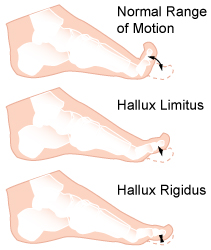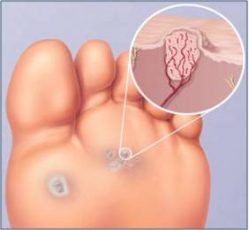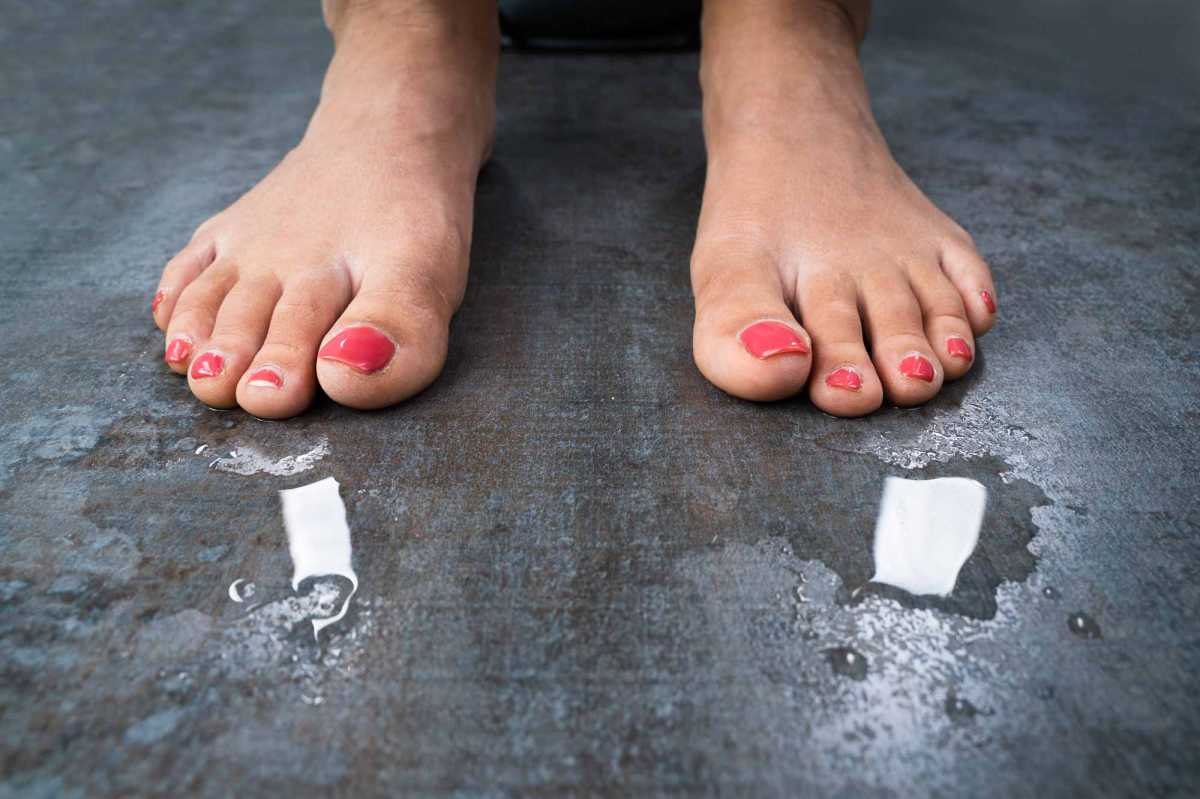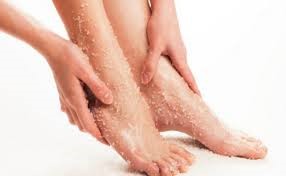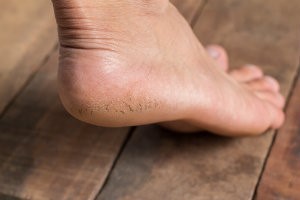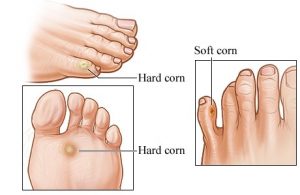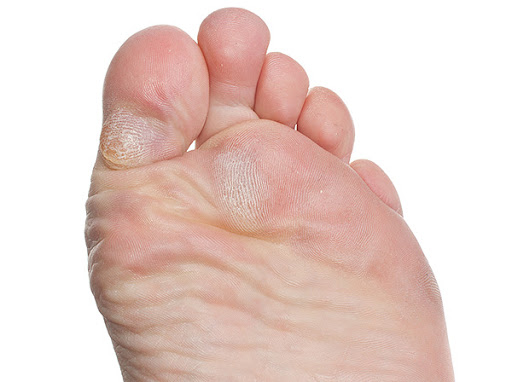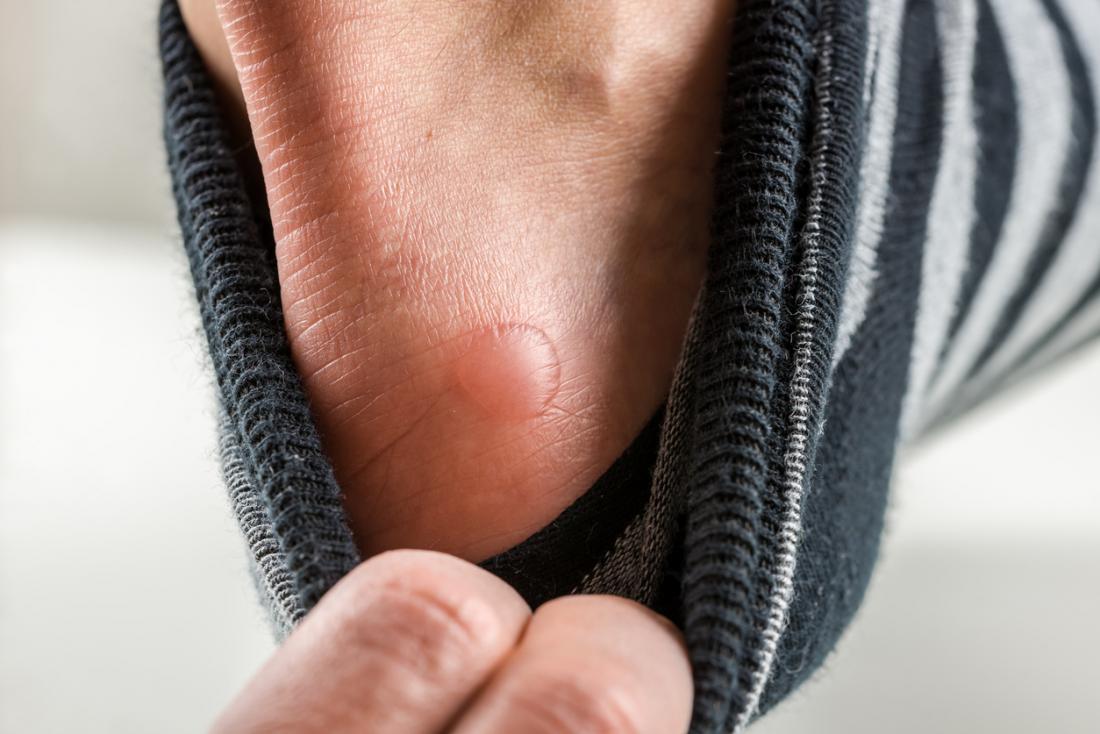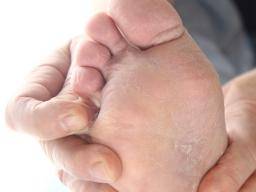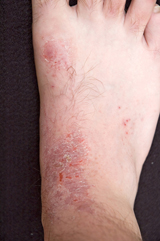Common Foot Problems
- Details
- CONDITION
Hallux limitus is a condition that affects the hallux, which is the joint where your big toe connects to your foot. It results in limited movement of this joint. People with hallux limitus have limited flexibility in the joint and trouble bending their big toe. The inflexibility leads to pain, especially when walking. As the condition progresses, you can develop bone spurs and arthritis in your big toe, eventually making the toe joint completely rigid. When this happens, the condition is called hallux rigiduc which is osteoarthritis of the 1st toe.
- Details
- CONDITION
A plantar wart, or verruca, is a wart occurring on the bottom of the foot or toes. Their color is typically similar to that of the skin. Small black dots often occur on the surface. One or more may occur in an area. They may result in pain with pressure such that walking is difficult.
- Details
- CONDITION
Excessive sweating of the feet is called hyperhidrosis. It's more common in men than in women, and more common in young adults than older adults. People whose feet sweat excessively often also have problems with excessive sweating of the palms. Excessive sweating of the feet seems to be an inherited problem. No one knows exactly why it occurs, but people who sweat excessively seem to have a different “set point” than other people. Most people sweat when it's hot out, or when they become warm. People with hyperhidrosis sweat excessively almost all the time.
The most obvious symptom of hyperhidrosis is feet that sweat excessively. Some people sweat so much that their feet may slip around inside their shoes. The feet may also have a whitish, wet appearance; sometimes, foot infections are present as well. (Constant wetness breaks down the skin, allowing infection to set in.) Foot odor is common. Those suffering from hyperhidrosis may also experience emotional stress and worry regarding foot odor. Sweat-related anxiety and isolation can be particularly severe among teens with plantar hyperhidrosis.
- Details
- CONDITION
Anhidrosis is the term used to describe dry feet. Skin on feet are naturally dry, unlike elsewhere on the body skin on the feet do not have oil glands so relies on sweat glands to keep feet moisturised. Dry skin can cause cracking, dry patches and itchiness. Dry skin can be caused by: excessively hot baths / showers, weather conditions, open backed shoes, some medical conditions.
- Details
- CONDITION
Heel fissures are cracks or divides in the skin over your heels. Sometimes these are an uncomfortable nuisance because they cause thick layers of dead skin cells to build up. Other times they can be potential triggers for painful, dangerous infections and skin damage. If you have heel fissures, there are treatments you can try as well as preventive methods to keep your skin soft.
- Details
- CONDITION
Corns are hard, thickened areas of skin that typically occur on the feet. They're similar to a callus, but are usually harder, smaller, and more painful. Corns aren't dangerous, but they can cause irritation.
- Details
- CONDITION
A callus is an area of thickened skin that forms as a response to repeated friction, pressure, or other irritation. Since repeated contact is required, calluses are most often found on the feet and hands, but they may occur anywhere on the skin. Some degree of callus, such as on the bottom of the foot, is normal. Although calluses can occur anywhere on the body as a reaction to moderate, constant "grinding" pressure, they are most often found on the foot (where the most pressure and friction are applied). On the feet, arguably the source of the most problematic calluses, they typically form on the metatarsal-phalangeal joint area ("balls of the foot"), heels and small toes due to the compression applied by tightly fitting shoes.
- Details
- CONDITION
A mixture of friction and pressure causes a majority of blisters on the feet. When the skin of the feet is continually rubbed against a shoe, sock, or rough surface, irritation and inflammation often occur. The result is pain, swelling, and redness. A red sore will usually develop on the foot before the blister itself.
- Details
- CONDITION
Foot fungus is a skin infection caused by mold-like germs that live in dead cells on your skin, hair, and nails. There are more than 80 types of fungi on your feet. That's more than on other parts of the body, even the palms of your hands. But while some of these fungi may get a bad rap, most aren’t harmful. Athlete’s foot is the most common type of foot fungus. Up to 25% of people will get this itchy, even painful infection at some point. It usually grows between the toes but can spread to the soles and toenails. If you scratch your foot and then touch other parts of your body, like your armpits or groin, it can spread there, too.
- Details
- CONDITION
Your feet are prime targets for eczema triggers like dry winter air or hot summer days. And flares on your fingers and toes can be itchy and painful. So give these parts of you a little extra TLC. Are your feet often dry and itchy? Your socks may be to blame. Synthetic fabrics and wool can irritate your skin. For everyday wear, choose 100% cotton socks, preferably ones that have not been dyed. Also, change your socks a couple of times during the day if your feet sweat. Damp socks can make eczema worse.
